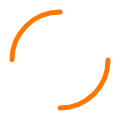My catheter
- Things to know about drainage of pleural effusion and ascites
Due to various diseases, recurrent pleural effusions or ascites can form. This is also called water in the lungs or abdominal fluid. To maintain your mobility and spare you constant hospital visits or stays, we offer our specially developed products and services and are at your side with our ewimed care concept.
My Catheter - Things to Know about Drainage of Pleural Effusion and Ascites
Due to various diseases, recurrent pleural effusions or ascites can form. This is also called water in the lungs or abdominal fluid. To maintain your mobility and spare you constant hospital visits or stays, we offer our specially developed products and services and are at your side with our ewimed care concept.
What kind of catheter is it and what does it do?
A drainova® or PleurX™ catheter is a soft, flexible silicone tube. The catheter is implanted in a small minimally invasive surgery which does not need to be replaced. It is placed so that the section lying inside the body can drain the effusion to the outside. There is a polyester cuff on the catheter that fuses with the tissue under the skin preventing the catheter from accidentally being pulled out. At the non-implanted end, the catheter has a safety valve to which a drainage set is connected as needed, or prescribed by the physician, to drain the effusion.

Mit dem Laden des Videos akzeptieren Sie die Datenschutzerklärung von YouTube.
Mehr erfahren
If there is no drainage, the catheter is connected with a foil dressing. It can thus be worn inconspicuously and comfortably under clothing and is not visible to others. This gives the benefit of having maximum freedom of movement. Furthermore, the patient avoids repeated punctures at the clinics and the associated discomfort including time.
You are in the best hands with ewimed
Our many years of experience in this field enables us to give patients some mobility back and we help improve their and quality of life, from implantation to homecare.
After implantation and the subsequent monitoring period, your catheter will allow you to be discharged and go back home. As part of our follow-up care, you will be trained by a training staff member in the use of our system and enabling you to perform the drainage yourself or have it performed by relatives or nursing services.
More information:
Frequently asked questions
Yes, year after year thousands of ewimed catheters are implanted by physicians in Germany, Austria, Switzerland, Sweden, Demark, and Hungary. You and other patients no longer have to go to the clinic for drainage and can spend more time with your family and friends. Our many years of experience has allowed us to increase the patient’s quality of life. You as our patient are our focus – we take care of you!
No, the catheter can be left in place indefinitely. If you notice any signs of infection at the catheter exit site, such as redness or swelling, please talk to your treating physician immediately. There is always someone available to help you with any uncertainties or questions you may have.
Yes, if your catheter is completely and correctly covered with the self-adhesive foil dressing, you can shower. However, if water gets under the dressing, you must apply a new dressing. Our tip: Shower before you drain and would have to change the dressing anyway because of it.

